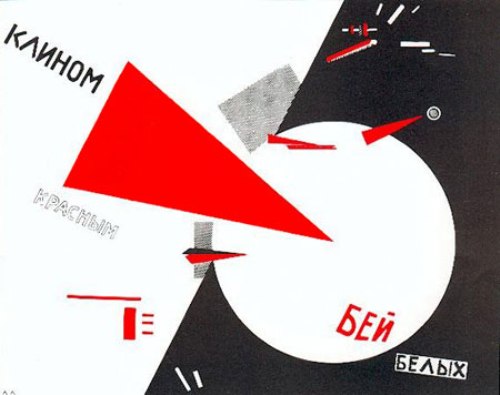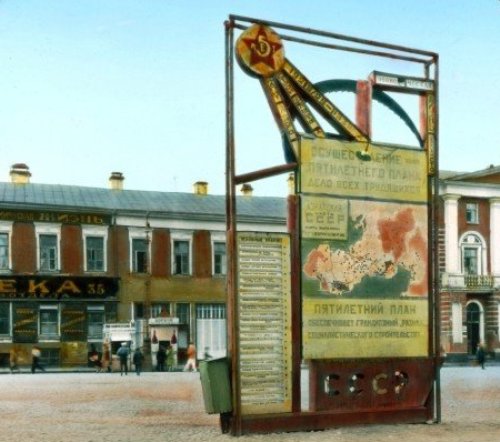Пропаганда в эпоху Булгакова
Русский > Контекст > Пропаганда > Эпоха Булгакова
The Bolshevik era (1917-1921)
At the time of the Bolsheviks, a life and death struggle took place for ideology. Citizens had to help to fight enemies within and without, and the propaganda was full of revolutionary fervor and powerful symbolism.
The New Economic Policy (1921-1927)
In 1921, Lenin introduced the New Economic Policy (NEP), by which a number of private enterprises could be established. Small farms and businesses could flourish again, while the state retained control of heavy industry, transport and foreign trade.
It was a period of recovery and relative freedom for a country that had been ravaged by war, famine and bitter discontent. Typical for the commercial and movie posters of the Roaring Twenties was, without anu doubt, their avant-garde constructivist style.
The Constructivists rejected art for art's sake and wanted to contribute to the building of a new communist society. Art For Production was the battle cry of artists like El Lisitsky (1890-1941) and Aleksandr Rodchenko (1891-1956). Their graphics and photomontages had a great influence on the Bauhaus and western graphic arts as a whole.
The first and second Five-Year Plans(1928-1937)
The first two Five-Year Plans were dramatic attempts of Stalin to transform Russia into a communist industrialized power. The propaganda of the First Five-Year Plan glorified the heroic aspect of this effort.
Private farms were abolished and replaced by collective enterprises in which the peasants worked for the State. The resistance against it was brutally suppressed and in 1933, both industry and agriculture were firmly under the control of Stalin. All means of propaganda were used to declare plan as fully realized six months before its deadline.
At the time of the Second Five-Year Plan, the period of the Great Purge, the avant-garde art was banned completely. The theme of those years was mobilization. In 1932, Stalin decreed that all art had to conform to the norms of Social Realism, and the propaganda had to be a realistic representation of the Soviet Communist values and life and all forms of expression were mobilized to serve the state.
The plan generated a plethora of strictly controlled propaganda. Striking posters appeared everywhere, in factories, farms and all public areas, in a wide variety and massively. The country was in the attack to implement the plan, to get the quotas and to defend the Soviet Union.
Поместить эту страницу |

